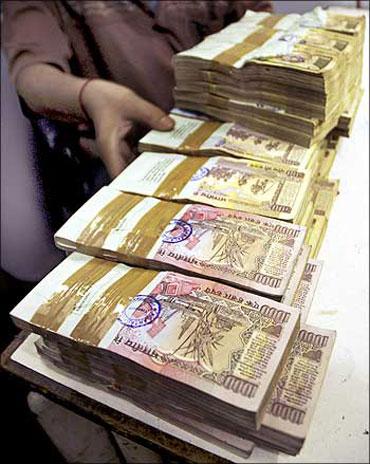 India faces one-in-three chance of rating downgrade in the next two years in case the government fails to push reforms in view of the political gridlock and ensuing general election in 2014, Standard & Poor's said.
India faces one-in-three chance of rating downgrade in the next two years in case the government fails to push reforms in view of the political gridlock and ensuing general election in 2014, Standard & Poor's said.
The problems being faced by the economy include soaring fiscal deficit and high inflation, S&P said while retaining India's rating at 'BBB-', lowest in the investment grade.
Any further downgrade will push India's rating to the junk status, making it difficult and costlier for Indian entities to borrow funds overseas.
"The negative outlook signals at least a one-in-three likelihood of a downgrade within the next 24 months. A downgrade is likely if India's economic growth prospects dim, its external position deteriorates, its political climate worsens, or fiscal reforms slow," S&P said.
High fiscal deficit and a heavy debt burden would remain the most significant rating constraints, it said, adding that things could improve with government initiatives to reduce the deficit and improve investment climate.
"Given the political cycle -- with the next elections to be held by May 2014 -- and the current political gridlock, we expect only modest progress in fiscal and public sector reforms.
"Such reforms include reducing fuel and fertilizer subsidies, introducing a nationwide goods and services tax, and easing of restrictions on foreign ownership in various sectors such as banking, insurance, and retail," S&P said.
However, another rating agency Moody's showed optimism by stating that India's growth prospect should be better in 2013 following withdrawal of support to government by an 'obstinate coalition partner' (Trinamool Congress) and flurry of reforms initiated by new Finance Minister P Chidambaram.
The credit rating agency said that India's external position remains resilient despite a deterioration since fiscal 2006.
The Current Account Deficit widened significantly to 4.1 per cent of GDP in 2011-12 fiscal, from 2.7 per cent in the previous fiscal year.
The central government's own medium-term fiscal policy envisages reducing the deficit to 4.5 per cent in fiscal 2014 from an estimated 5.9 per cent in fiscal 2012.
"These targets may be beyond the reach of the current government, particularly if global oil prices increase significantly," S&P said.
It further said that high inflation remains a risk to India's macroeconomic growth. The WPI inflation, which peaked at 12.4 per cent in 2009, remained high at 7.2 per cent in October 2012.
India's economic growth fell to nine-year low of 6.5 per cent in 2011-12 fiscal. The growth in the current fiscal is likely to be 5.8 per cent, as projected by the RBI.
In the first half of the fiscal, economic growth stood at 5.4 per cent, as against 7.3 per cent growth recorded in the corresponding period last year.









